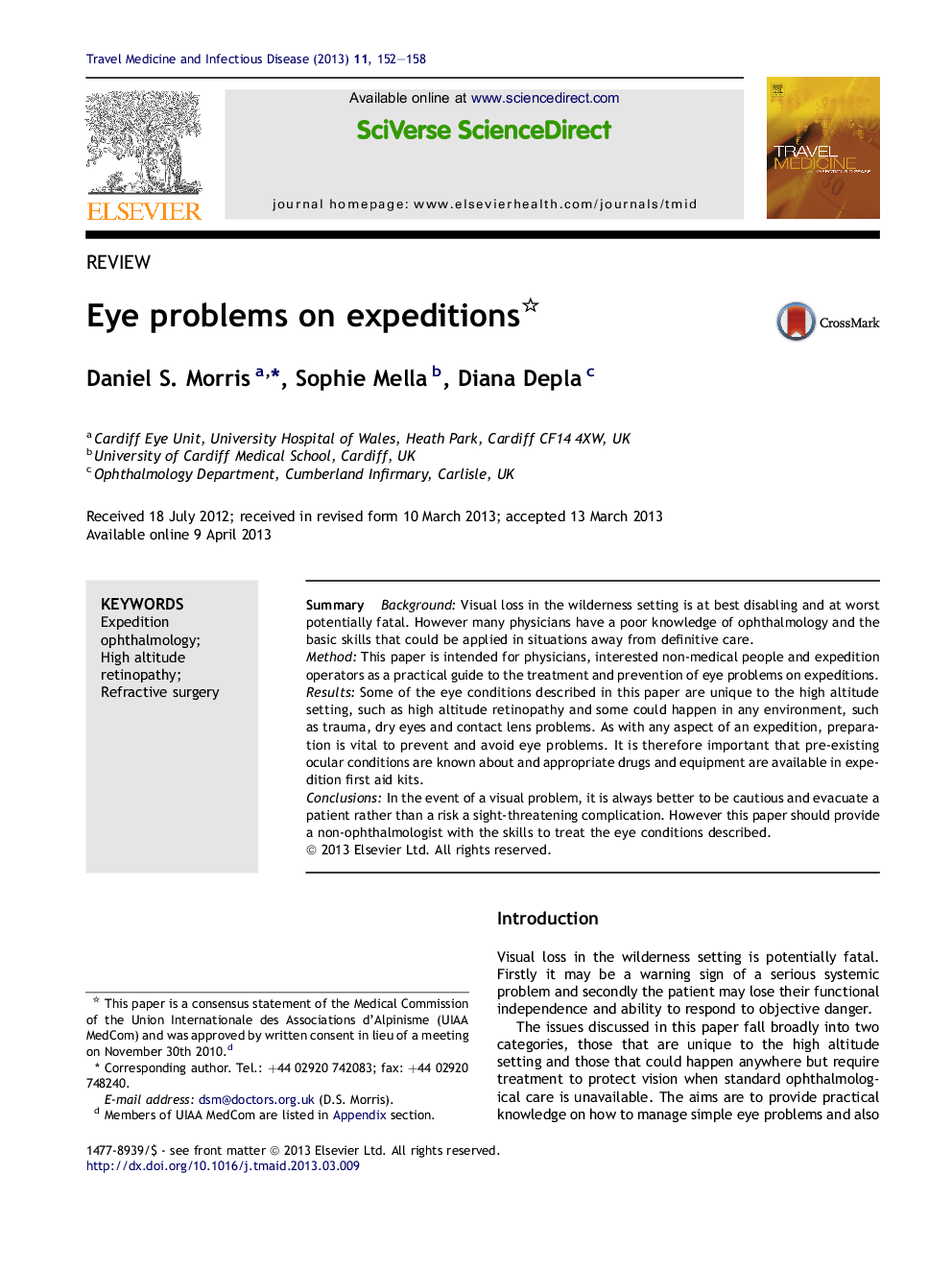| Article ID | Journal | Published Year | Pages | File Type |
|---|---|---|---|---|
| 3393045 | Travel Medicine and Infectious Disease | 2013 | 7 Pages |
SummaryBackgroundVisual loss in the wilderness setting is at best disabling and at worst potentially fatal. However many physicians have a poor knowledge of ophthalmology and the basic skills that could be applied in situations away from definitive care.MethodThis paper is intended for physicians, interested non-medical people and expedition operators as a practical guide to the treatment and prevention of eye problems on expeditions.ResultsSome of the eye conditions described in this paper are unique to the high altitude setting, such as high altitude retinopathy and some could happen in any environment, such as trauma, dry eyes and contact lens problems. As with any aspect of an expedition, preparation is vital to prevent and avoid eye problems. It is therefore important that pre-existing ocular conditions are known about and appropriate drugs and equipment are available in expedition first aid kits.ConclusionsIn the event of a visual problem, it is always better to be cautious and evacuate a patient rather than a risk a sight-threatening complication. However this paper should provide a non-ophthalmologist with the skills to treat the eye conditions described.
